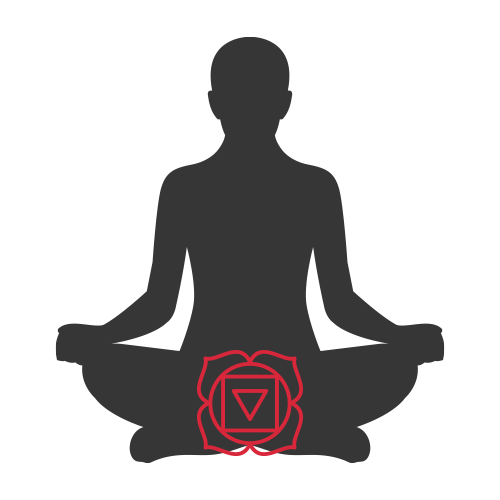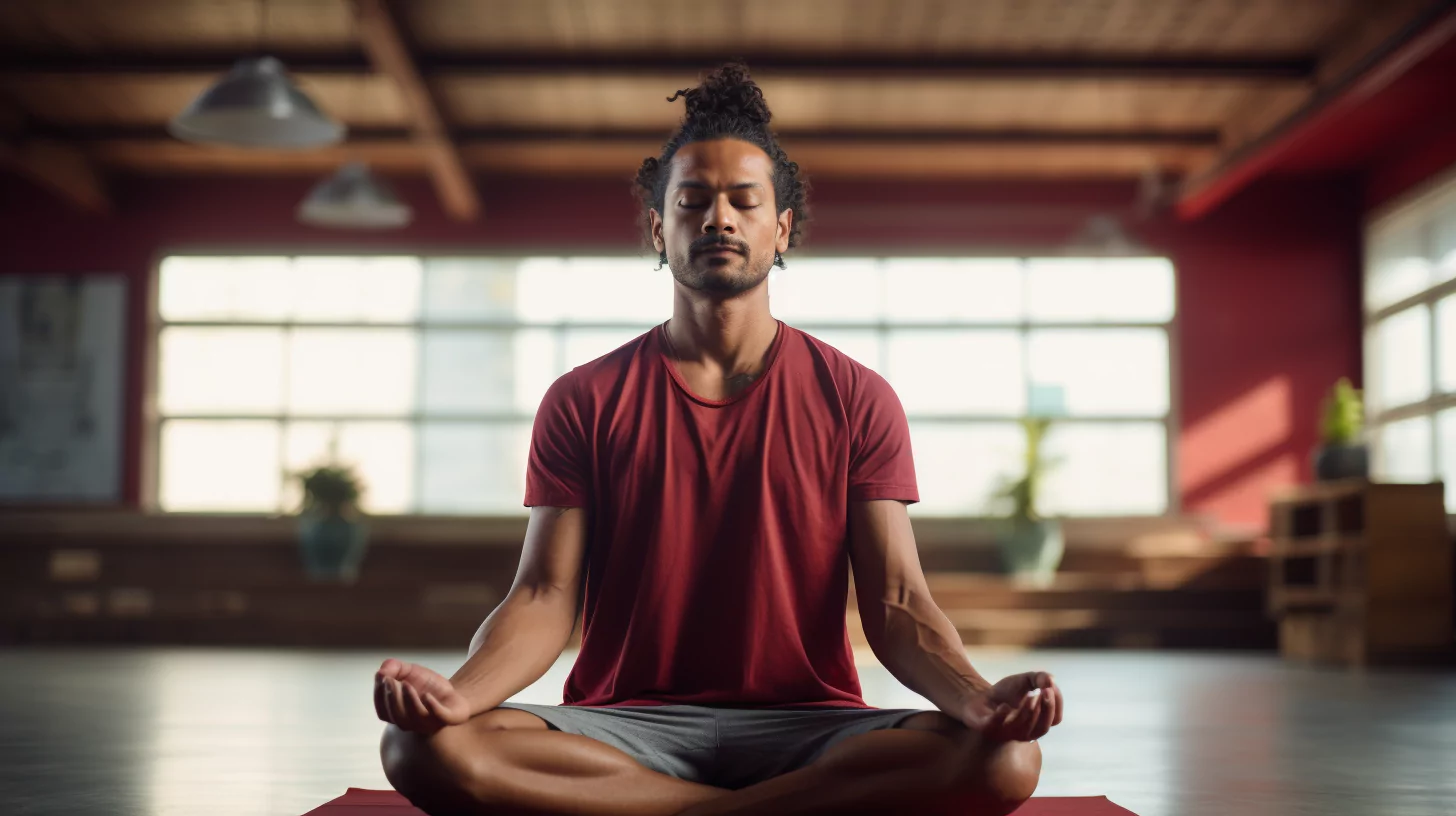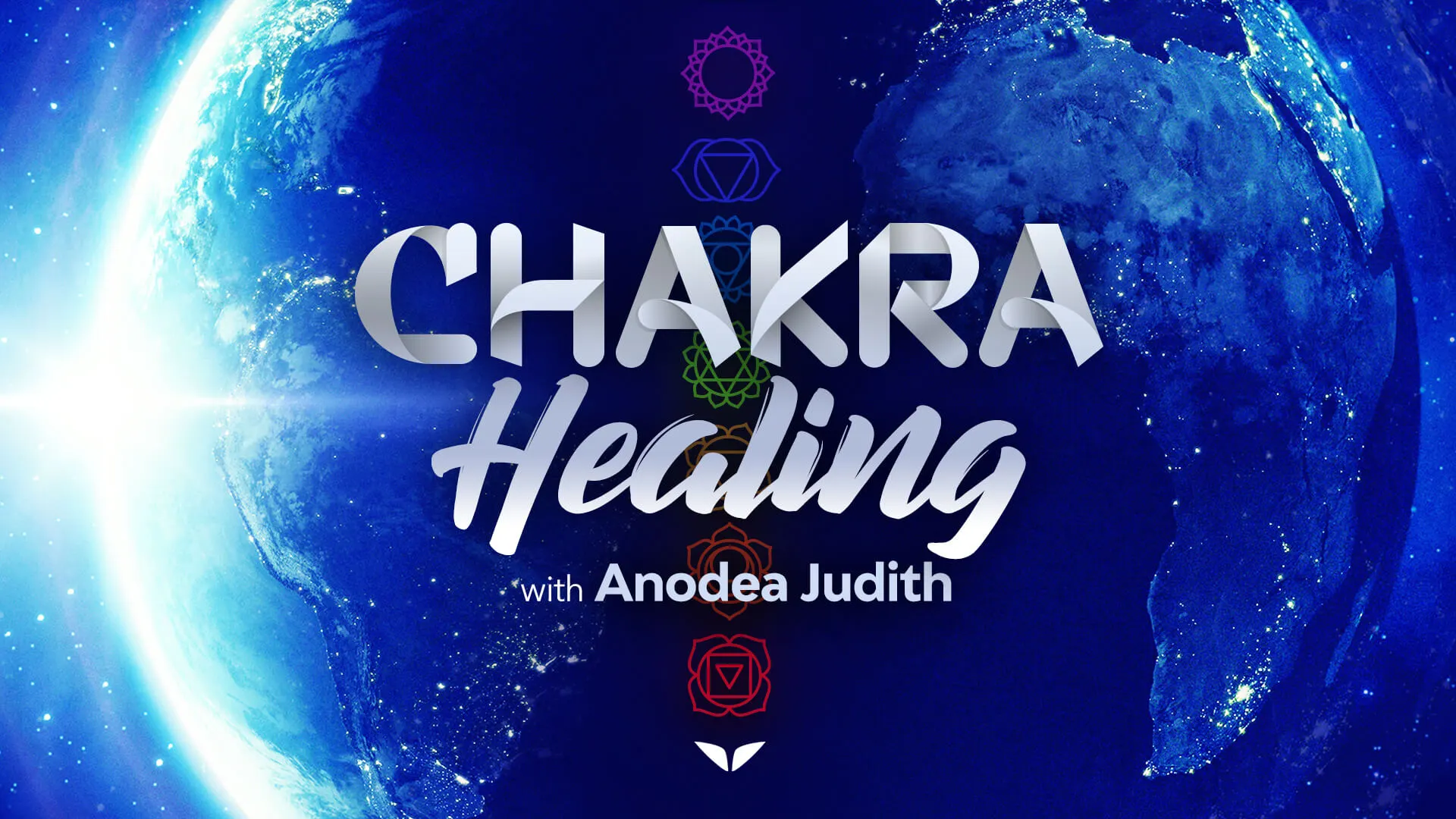If you’ve always felt like an alien on Earth, feeling abandoned and disconnected from your body and the world, the root chakra could be the answer to why you feel this way.
“The body is the vehicle, consciousness is the driver,” says Anodea Judith, a world-leading chakra expert and trainer of Mindvalley’s Chakra Healing program. “Yoga is the path, and chakras are the map.”
What is the root chakra?
The root chakra is the first energy center in the seven-chakra system. Also known as Muladhara, it literally means “root support” or, as Anodea defines it, “sacred ground.”
“If you want to build a bridge, the root chakra is your foundation, which has to be deeply rooted in the Earth,” she says. “That’s why its element is Earth.”
What is the root chakra responsible for?
With the root chakra, you’ll be assured that the world will provide everything you need, that you’re safe, and that you can relax into your journey.
So as the first chakra, its purpose implies:
- Getting grounded,
- Gaining stability and solidity,
- Learning containment, and
- Having things like security, trust, and prosperity.
And by nurturing your root chakra, you can lay a solid foundation for your growth, emotional balance, and spiritual development.

Where is the root chakra?
The root chakra is located in the perineum for men and the cervical area for women. Because this energy center is at the base of your spine, it connects you to the element Earth.
To put it into an analogy, it would look like this: If you were a tree, the Earth would be the foundation of your life. And as roots push downward to help make the plant grow upward, your legs are the roots that plug into the ground.
Why the Muladhara chakra must be balanced
The root chakra also governs your connection to the wider world. Anodea explains that it’s your first imprint of life and most imbalances are, first and foremost, deeply rooted in your early childhood.
For instance, your youthful episodes of insecurity or mistrust can make it harder for you to experience the proper sense of connection, often making it difficult to deal with confrontation.
What’s more, this energy center is about being fully present in your body and embodying the spirit.
And because the root chakra is physically placed at the very base of the spine, it’s also strongly associated with the digestive tract. Imbalance in this chakra can cause urinary problems, bowel disorders, and a range of different muscular complaints in the hips and legs.
The most common issues associated with the blocked first chakra include:
- Feeling stuck and sluggish,
- Feeling victimized by external circumstances,
- Persistent financial problems,
- Constantly getting by or going without,
- Hatred and anger toward your body, and
- Feeling you are not good enough the way you are.
It’s your fundamental connection with your body and the world, so healing this connection is the first step to living up to your fullest potential.
Signs of an excessive root chakra
Depending on how you dealt with the sense of being unwanted or unsafe, you could develop either an excessive or deficient root chakra.
An excessive root chakra manifests itself as:
- Being overly attached to the material world,
- An instinct to eat a lot,
- Impulsive behaviors, and
- Harmful sexual promiscuity.
In other words, if you have an excessive Muladhara chakra, you will overcompensate for it by dominating your surroundings.
On a purely physiological level, the excessive root chakra manifests in those with heavier legs that are muscled and tight.
Signs of a deficient root chakra
A deficient chakra wants to move out of the body, which leads to:
- Feeling ungrounded and disconnected from the body,
- Being attached to fear and distrust, and
- Finding it hard to connect with other people and the world around you.
With a deficient root chakra, it becomes difficult to summon the energy necessary to interact with the world and find the motivation to change it. This is why it manifests in those with skinny legs who find it hard to walk firmly on the ground.
How can I unblock my root chakra?
When you balance the chakra, you have trust in the world and yourself. You no longer live in survival mode.
The main challenge of the root chakra is fear, according to Anodea. So balancing this energy center is about transforming your fear into an ally.
There are three aspects to look into when it comes to chakra healing: physical, psychological, and spiritual.
- On a physical level, balancing the root chakra means working on balance and stability, as well as strengthening your legs;
- On a psychological level, it’s about recreating the sense of belonging and safety in the world; and
- On a spiritual level, it’s about connecting with nature and the Earth and seeing them as your home, not a place to visit.
The spirit wants us to make a bridge between the Earth and heaven. And the foundation to it is in seeing the Earth as sacred.
— Anodea Judith, trainer of Mindvalley’s Chakra Healing program

The root chakra meditation
Chakra meditation is designed to heal and balance your energy centers and is fundamental to all forms of this traditional practice. Without balancing it, it’s difficult to make progress toward health and well-being.
With the root chakra meditation, a seated posture is used, which allows you to concentrate on the chakra’s physical location. It grounds you and gives you a tangible experience of stability.
Here’s how to meditate:
- Find a peaceful place where you won’t be disturbed for at least half an hour.
- Sit comfortably on the floor with your legs folded in front of you and your spine erect. Let your hands fall limp on your knees.
- Start breathing deeply and evenly.
- Place your attention on your pelvis, imagining and exploring an anchoring connection reaching down from the pelvis into the Earth.
- You can visualize a glowing red orb at the base of your spine, connecting you all the way to the center of the Earth.
- Breathe its nurturing energy into your root chakra, allowing it to clear, cleanse, and balance this energy center.
- Breathe out the sense of unsafety, scarcity, and mistrust.
- Meditate like this until you feel completely safe and nurtured.
Also, the root chakra meditation can be as simple as earthing—when you consciously and intentionally connect with the energies of the earth while walking, standing barefoot, or hugging a tree.
Root chakra affirmations
Affirmations designed to reinforce the balanced Muladhara chakra tend to emphasize the individual’s connection with the world and their rightful place in it. And it’s important to stress the safety and security of one’s position.
Here are a few examples of affirmations for the root chakra:
- “The world around me is a safe place.”
- “I am a part of this world,” and
- “I am at peace with the people and things around me.“
How do you use affirmations to open the root chakra?
- Choose an affirmation that resonates with you.
- Repeat it several times a day, either aloud or silently.
- Visualize yourself embodying its qualities or beliefs.
- Be open to any manifestations that may appear.
It can be something very unique to you and your early childhood, so you can create your own affirmations to make this practice even more powerful.
Root chakra mantras
Many different mantras, prayers, and songs have been composed to honor the root chakra and help in efforts to bring balance to it. As with each of the seven primary chakras, the Muladhara chakra has a single-syllable seed mantra that is broadly useful in meditation and other forms of healing practice.
The seed mantra for the root chakra is “LAM.” This can be repeated either aloud or silently during your meditation.
Here’s how you use mantras:
- Find a quiet and comfortable place to sit.
- Close your eyes and take a few deep breaths to relax your body and mind.
- Begin chanting “LAM.”
- Focus on the sound of the mantra and try to let go of any other thoughts or distractions.
- Repeat your mantra for as long as you like.
- When you’re ready to stop, take a few deep breaths and sit in silence for a few moments.
- Observe any sensations or thoughts that may come up.
It’s best to practice chanting your mantra regularly. It’s ideal to do it daily or several times a week.
Color, gems, and mudras
Every chakra has a color, gem, and mudra attached to it. So using them in your healing practices will amplify the process.
Chakra color
The active root chakra color is red, so any energy visualized during root chakra meditation is perceived as red.
Here’s how to incorporate the color red:
- Wear red clothing and accessories.
- Incorporate more red-colored foods into your diet, like red apples, watermelon, beets, strawberries, and tomatoes.
- Paint your toenails red.
- Add red decor elements to your interior.
Gems and stones
Red-colored gems and crystals are associated with the root chakra, such as ruby, garnet, bloodstone, and red jasper. Crystals like obsidian and smoky quartz carry a strong grounding vibration, so they are perfect for this energy center.
While there are no scientific studies on the efficacy of crystal healing, if you believe in the healing powers of crystals, they may assist you in chakra healing, according to research.
Mudras
There are two primary mudras, or hand gestures, associated with the root chakra: the “Muladhara Mudra” and the “Prithvi Mudra.”
Here’s how to practice the “Muladhara Mudra”:
- Lace the pinky and ring fingers together and fold them into your palms. The middle fingers are extended, with the tips of the fingers touching.
- Then bring together the thumbs and ring fingers in tip-touching rings. Keep them locked together so that each hand interlocks with the other.
This mudra can be positioned with the middle fingers pointing either up or down (toward the chakra itself).
Here’s how to practice the “Prithvi Mudra”:
- Point your palm upwards, and bring the ring finger back to touch the tip of the outstretched thumb.
- Relax the rest of the fingers.
This mudra can be practiced in seated meditation positions, with your knuckles resting on your knees.

Building a strong foundation for a fulfilling life
“Your body is the vehicle where your whole journey takes place,” says Anodea. “It’s the only thing you’re going to have as long as you live.”
So healing this chakra is healing the beginning of your life—its core and the seed. She calls this process “harvesting;” and after harvesting the root chakra, you will be more grounded, more stable, and more confident.
Most importantly, you will be free to be who you truly are.
If you aspire to begin your root chakra healing journey and beyond, the Chakra Healing program with Anodea Judith is for you. Just like Trent Thomason, a student of the course: “Thank you, Anodea Judith, for helping me find more inner peace and for bringing a sense of awe, wonder, and beauty back into my life.“
This program has helped thousands of people around the world heal their minds, bodies, and spirits, with over 18,000 success stories. The best part is that you watch the class on root chakra healing for free.
Welcome in.








